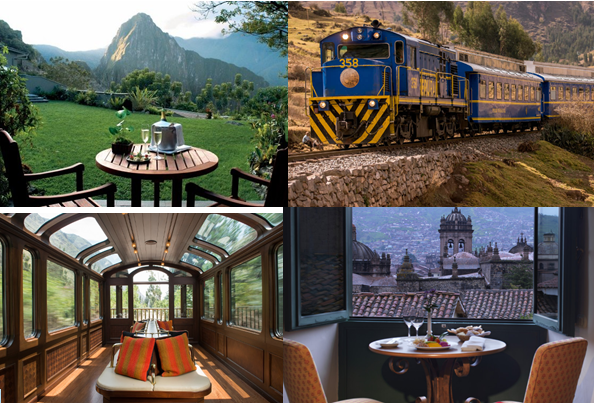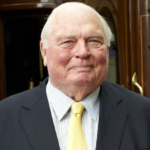PeruRail, Monasterio, Nazarenas and Sanctuary Lodge For Sale
By Nicholas Asheshov
Belmond Orient Express picked up Southern Railways for $0 in 1999. Today bids will start at $500mn
 Belmond, better known as Orient Express Hotels, OEH, is saying quietly from its HQs in Bermuda and London that it is throwing in the towel and is seeking a buyer for its 46-strong worldwide collection of old luxury hotels, Burmese cruise boats and exotic railway services.
Belmond, better known as Orient Express Hotels, OEH, is saying quietly from its HQs in Bermuda and London that it is throwing in the towel and is seeking a buyer for its 46-strong worldwide collection of old luxury hotels, Burmese cruise boats and exotic railway services.
Belmond people imply they would prefer to sell the company as a job lot, but they will also entertain bids for bits and pieces. Some of these are owned in partnership with locals, as is the case with Peru where half of Belmond Peru is owned by a couple of locals.
The Belmond hotels and trains are, as they have been for a couple of decades, the most prominent tourism operation in Peru.
Other Belmond properties are scattered through Europe, Africa, the United States, Burma and Latin America. The single biggest-money spinner is its flourishing Southern Railway and its half dozen profit-churning hotels in Peru, picked up for a song in the privatizations of the 1990s.
Peru is Belmond’s biggest by far money-maker, worldwide.
In Peru it is the railway companies that make most of the money. The dynamic duo of PeruRail and Ferrocarril Transandino, which carry most of today’s million and a half passengers to and from Machu Picchu, are bringing in annual revenues of $200mn. More valuable still is the railways’ mining transport business, centered on Arequipa where a main client is the Cerro Verde copper mine, one of the world’s biggest.
It was Belmond, better known as Orient Express, which created Peru’s booming high end international tourism business, turning Peru from backpack backwater into a multi-billion dollar business.
Belmond-OEH acquired management and control of the Monasterio and Sanctuary Lodge hotels in Cusco and Machu Picchu in 1998. The railway concessions came the following year. Peru was still suffering from the backlash of a couple of decades of civil strife and economic shambles, but within a couple of years the company had transformed the Cusco tourist industry from a collection of one- and two-star family businesses into the beginnings of what is today a prominent international destination with a reputation for fine dining, stunning scenery, a deep accessible history and a warm traditional culture. OEH, which changed its name to Belmond three years ago, today has expanded the Nazarenas Hotel next door to the Monasterio, both of which feature $800-night rooms with pressurized oxygen to help visitors face Cusco’s bracing 11,500 ft a.s.l.
They also have the Rio Sagrado Lodge in Urubamba and the Miraflores Park Hotel in Lima. Besides its commuter services through the Machu Picchu gorge, Perurail today runs, too, luxury open-verandah services featuring grand piano bars, and boat trips on Lake Titicaca.
Starting with the Monasterio, in the heart of olde Cusco, Orient Express, founded in 1982 by James Sherwood, an American living in London, brought for the first time European flair, experience and hard-knuckle management and marketing to the tourism industry in Peru. In a phrase, five stars plus croissants. The process had stumbled into life with the privatization in 1995 of the State’s rundown collection of a couple of dozen hotel properties. The century-old State-owned railways, once British, had become dirty and dangerous. Their privization followed in 1999.
The OEH-Belmond Peru operation has been a tremendous financial success, though the figures are hidden behind impenetrable WTF accounting and soft shoe shuffle walls surrounding the boards of directors in London and in Lima.
The company picked up the railway for zero dollars in an international privatization bid on the commitment it would spend $100mn in the modernization of the track and rolling stock. It borrowed the money locally, mostly from the Banco Wiese, now long dead and gone, upgrading the old carriages and locomotives. The investment commitment was treated as tax-deductible expenses, meaning Peru taxpayers took the hit, reflecting Belmond’s thoughtful financial management.
It did much the same for the hotels. As with the railways, the company borrowed on the Lima market saving it the trouble of bringing in capital from abroad. Orient Express in London would even make tax-free money on providing guarantees for its Peru subsidiaries.

A money-spinning jewel created by the Belmond-OEH Peru crown is the Machu Picchu Sanctuary Lodge, a 28-room $1,000-a-nightery. When Belmond took it over it was a rundown adobe backpacker shack which did $5 spaghetti lunches. Belmond bulldozed it and replaced it with a $5mn five-star Lodge, the most expensive in Peru, full year-round. Today the spaghetti costs $40, the busiest restaurant on the tourist circuit.
This is, however, only one of the clouds of fruity finances surrounding most things to do with Machu Picchu as, one supposes, with many tourist draws elsewhere. In the patio outside the Belmond Lodge, built like a nuclear shelter, is a dozen belching diesel buses for which queues stretch for an hour, a mile through the diesel and toilet fumes rising into the shadeless sun or, as it may be, the pouring rain. Caveat Emptor. Today many visitors spend more time in desperation at the doors of the Lodge than within the ruins themselves, where they’re driven by whistle-blowing guards through the ruins. Belmond Lodge clients alone can slip in early and do not have to spend hours lining up for buses and toilets.
A feature of the Belmond Peru ventures is they are half-owned by a pair of low-profile Lima financiers, Lorenzo Sousa and Rafael Lopez Aliaga, who have in Lima a reputation for feisty litigation.
Belmond is long established in London, its management HQ, and New York where under a sequence of names it has been quoted on the NYSE. It is registered in Bermuda where the company has been a pioneer in accounting systems, which have shielded the OEH/Belmond boards of directors from tax authorities elsewhere. Above all, Belmond has proven to be out of reach of its thousands of investors and, years ago, bondholders. To sum it up, the directors of OEH/Belmond and the managers of successful operations like Peru, have been well rewarded. Public records show that ordinary shareholders have not been paid a dime.
Orient Express Hotels was set up as a subsidiary of Sea Containers Ltd, a shipping company founded in 1965 by James Sherwood and quoted on the NYSE as SCL. Sea Containers-OEH built up a collection of iconic olde hotels in Venice, Petersburg, Cape Town, Rio, Madrid, Madeira and Portofino, with luxury railways in South Africa, Australia and Malaysia as well as the Orient Express running from Paris, and the Flying Scotsman between London and Edinburgh.
In 2000, shortly after the Peru operation was started, the Orient Express division was asset stripped out of the Sea Containers conglomerate. Sherwood launched OEH on its own on the NYSE at $20/,raising $500mn.
A few months later, Sea Containers collapsed, declaring bankruptcy. Bondholders and shareholders alike saw their paper turn to smoke and mirrors. Nada. This is the return, too, they have seen from Belmond OEH.
The OEH name was changed three years ago to ‘Belmond” to avoid legal complications in Paris.
As for the 50% of Peru hotels and railways, these will possibly be sold off in a side deal, fruit and all. Belmond has regularly reported operating losses once the company directors, key executives, partners and the owner of the B shares have been taken care of, as per usual.
Belmond has been seeking a buyer for years for this collection of venerable mausoleums.
James Sherwood is 85.
_____________________
Nick Asheshov was editor of the Andean Air Mail & Peruvian Times during the 1970s and 1980s, and of The South Pacific Mail, Santiago during the 1990s. He was Latin America Editor of Institutional Investor, New York over the same period. He lives in Urubamba, where he writes a blog and where he has been prominent in the hotel and railway business.






Excellent article by Nick Ashishov. Well done Nick! You are an encyclopedia in this business. It was about time for everyone to know what was going on with this company. What a pity for Peru!
The story of Belmond’s questionable exploitation, to say the least, of Peru’s ancestral, or millenary, tourist-worthy archeological sites, Incan routes, preexisting railway facilities and transport routes, and other national assets, as related, revealed, and denounced in this article, that seemingly has returned negative values for the State and country, and ordinary Peruvians, and possibly billions for the company, can only have been born of the unholy marriage between the now Belmond, with the corrupt Peruvian State, its authorities, and its private sector cronies, begun in 1968 by General Velasco, continued during the tenures of Belaunde and García through the 80s, and further grown by Fujimori and Montesinos in the 90s, and Toledo, which continues to date, as evidenced by the calamitous condition of the judiciary, and the law enforcement apparatus in all of its levels and dimensions.
Well done, Nick!
Thank you Nick. As the owner of a small, Mom and Pop size and philosophy tour company in Peru and also a past resident of Urubamba in the 1980’s, it has been sad and enraging at the same time to watch what has happened over all these years. At least Nick is keeping some of us informed even if not enough of who needs to know.